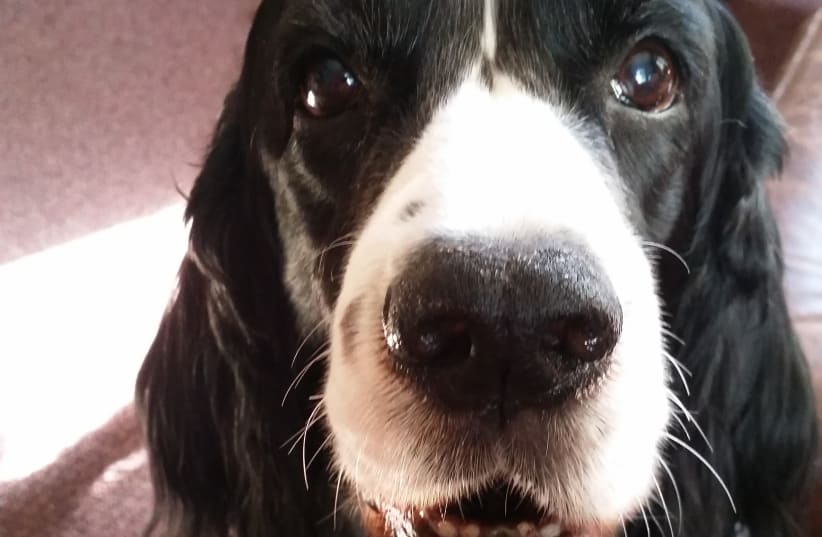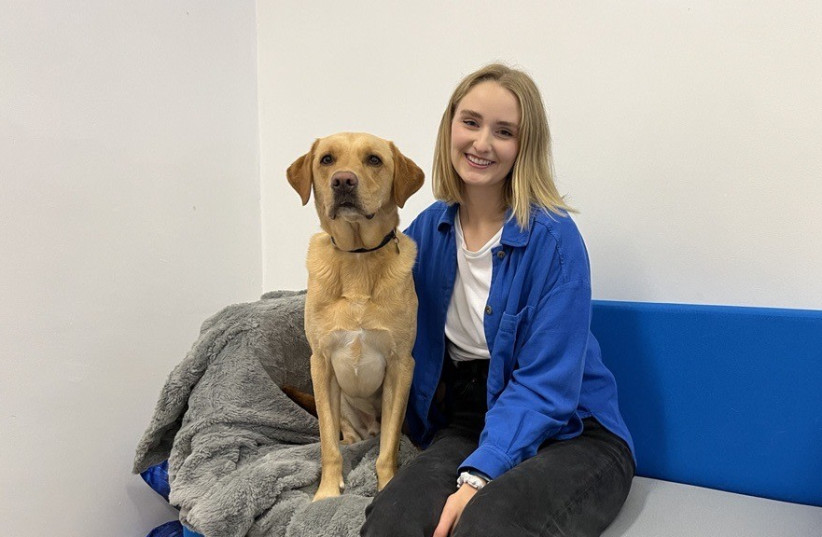Most dog owners have noticed that when their pets look into their eyes, they often tilt their heads, especially if the canine has a long nose. The reason is that tilting lets them have a good look at the mouth of the “leader of the pack” who takes care of them. Seeing a smile on the human’s face assures the dog, while seeing a frown or fear makes it worry and even want to comfort its owner.
It has also been proven in studies that when a human strokes his dog, his blood pressure level drops – as does that of the canine. The devoted pet also sniffs the owner’s breath and even their underarm sweat. A dog’s brain has a much bigger olfactory (smelling) than that of a human cortex – about 40 times larger – giving it an outstanding sense of smell, even from far away.
Now, a team led by Clara Wilson, a doctoral student with a psychology degree at Queen’s University in Belfast, Northern Ireland (UK) and colleagues have published their findings in the prestigious, open-access journal PLOS ONE. They found that dogs can smell when people, especially their owners, are stressed – and they can easily differentiate breath and sweat samples from people before and after a stress-inducing task.
The researchers found that the physiological processes associated with an acute psychological stress response produce changes in human breath and sweat that dogs can detect with an amazing accuracy of 93.75%.
“Odors emitted by the body constitute chemical signals that have evolved for communication, primarily within species. Given dogs’ remarkable sense of smell, their close domestication history with humans, and their use to support human psychological conditions such as anxiety, panic attacks and post-traumatic stress disorder (PTSD),” the researchers wondered whether dogs could be sensing chemical signals to respond to their owners’ psychological states.
IN THE new study, the researchers collected samples of breath and sweat from non-smokers who had not recently eaten or drank. Samples were collected both before and after a fast-paced arithmetic task, along with self-reported stress levels and objective physiological measures – heart rate (HR) and blood pressure (BP). Samples from 36 participants, who reported an increase in stress because of the task and experienced an increase in HR and BP during the task, were shown to trained dogs within three hours of being collected.
Four dogs of different and mixed breeds had been trained, using a clicker as well as kibble that it liked to eat to match odors in a discrimination task. Dogs were asked to find the participant’s stress sample that was taken at the end of the task, while the same person’s relaxed sample taken only minutes before the task began was also in the sample line-up.
Overall, dogs could detect and perform their alert behavior on the sample taken during stress in 675 out of 720 trials, or 93.7% of the time, much greater than expected by chance. The first time they were exposed to a participant’s stressed and relaxed samples, the dogs correctly alerted to the stress sample 94.4% of the time. Individual dogs ranged in performance from 90% to 96.9 % accuracy.
The authors conclude that dogs can detect an odor associated with the change in volatile organic compounds produced by humans in response to stress – a finding that tells us more about the human-dog relationship and could have applications to the training of anxiety and PTSD service dogs that are currently trained to respond predominantly to visual cues.
“This study demonstrates that dogs can discriminate between the breath and sweat taken from humans before and after a stress-inducing task,” the team concluded. “This finding tells us that an acute, negative, psychological stress response alters the odor profile of our breath/sweat, and that dogs are able to detect this change in odor.”
MEANWHILE, another new PLOS ONE study entitled “Exploring behaviors perceived as important for human-dog bonding and their translation to a robotic platform” has found that this bonding could guide the development of social robots. The researchers, led by Katie Riddoch of the University of Glasgow in Scotland, identified seven canine behaviors seen as important for bonding with one’s dog.
“Robots with social behaviors have been proposed as a potential solution to ease people’s loneliness and the challenges of aging,” they wrote. “Given the difficulty of creating robots that behave like humans and the known benefits of the bond between owners and their dogs, some researchers are exploring the possibility of developing dog-inspired robots that can form similar bonds with humans. However, this endeavor requires a deeper understanding of specific dog behaviors that facilitate human-dog bonds.”
An insight into human-dog connections
To gain deeper insight into human-dog bonds, Riddoch and her colleagues conducted a survey of 153 dog owners. They asked the participants open-ended questions about which dog behaviors they felt were especially important in establishing and maintaining a bond with their pet.
Owners described a wide range of key behaviors, such as nudging the owner with a paw or looking back at the owner on walks, which appeared to promote such perceptions as the dog being protective or checking in with the owner.
In analyzing the responses, the researchers identified seven core categories of behaviors that owners felt were important: attunement, communication, consistency and predictability, physical affection, positivity and enthusiasm, proximity and shared activities. The researchers suggest that incorporating these types of behaviors into robotic systems could aid development of robots that provide the same fulfillment and mental health benefits for people as bonding with a pet dog.
The next step, they suggested, will be to conduct experiments in which people interact with robotic dogs programmed to behave like real dogs. Meanwhile, other research could further investigate the dog-human bond such as by exploring variations in preferences for dog behaviors among people with different backgrounds and demographics.
“Using a qualitative approach enabled us to gain a deep and nuanced understanding of the things people find so endearing about our canine companions,” the researchers concluded. “While it won’t be easy to model most of these behaviors on robots, this work offers new and exciting insights for those working to develop pet-like technologies.”

